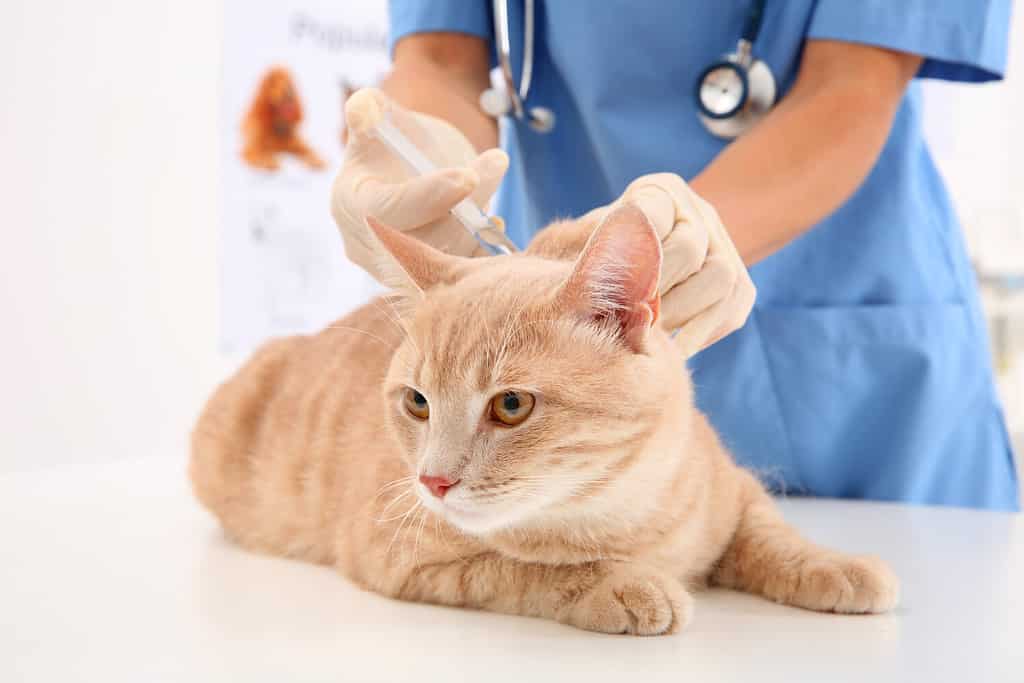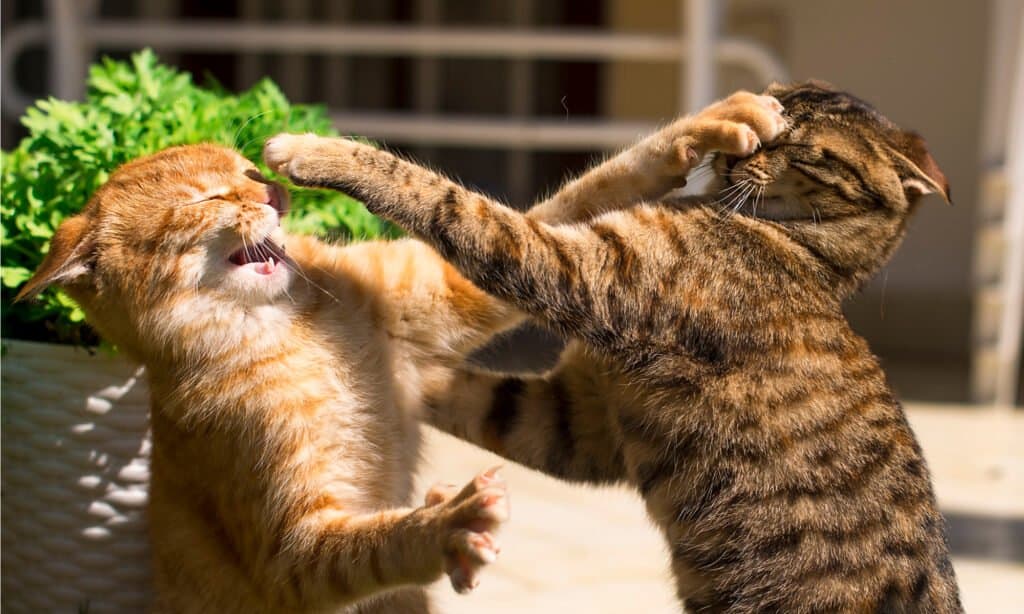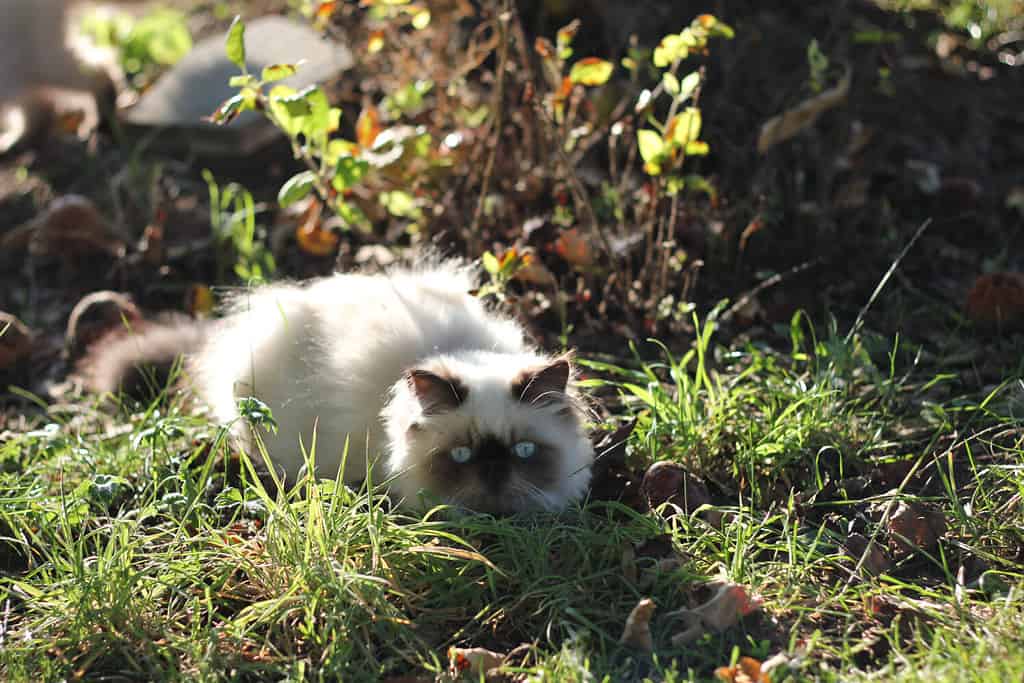We never want our furry friends to be uncomfortable or in pain. If your cat has watering eyes, you might be wondering what’s wrong. The good news is that watering eyes in cats is fairly common, and sometimes completely unnoticeable to the cat. But even if it doesn’t bother your cat, it’s good to know what’s causing their watering eyes. We’re going to cover a few reasons why cats have watering eyes and what it can mean.
Why Do Cats Have Watering Eyes?
There could be a few different causes behind your cats’ watering eyes, from allergies to upper respiratory infections to eye infections. Different colors of eye discharge can represent different issues. Clear discharge will often clear up on its own, while yellow or green discharge almost always requires a trip to the veterinarian. To diagnose your cat accurately, you’ll need to visit a vet, and if you’re ever in doubt, it’s best to go. Eye infections can become dangerous quickly and can lead to problems like vision loss and severe pain if left untreated.

You’ll want to get your cat to the vet for a thorough examination and to determine if medicine is needed.
©Africa Studio/Shutterstock.com
Allergies
One of the most common reasons for watery eyes is allergies. Like humans, cats can be allergic to pretty much anything from pollen to dust mites. Allergies are typically the most common cause of watering eyes, especially when the cat displays clear fluid. The reason why cats’ eyes water is because they get irritated and the tears work to flush them.
Allergies are the first thing to consider if your pet has clear watery eyes. Especially if you have recently introduced a new perfume, detergent, candle, or air freshener to your home.
Dry Eyes
Dry eyes are another common culprit of watering eyes in cats and often result from a type of allergy. Aside from allergies, dry eyes can also be caused by infection, nervous system damage, exposure to medication, and some diseases. Usually, dry eyes will be red and painful, and you’ll see a yellow, gooey fluid rather than clear. You may also notice your cat scratching or pawing at their eyes because the dryness causes them to be irritated and itchy. Dry eyes are almost always associated with another issue, whether an infection or an allergy.

Dry eyes often discharge a yellow, sticky fluid. Allergies often look like a clear, runny discharge.
©dimarik/iStock via Getty Images
Infection
Anytime you see yellow or sticky discharge, you’ll really want to get your cat to the vet right away. While clear discharge is almost always caused by viral infections, yellow or green discharge indicates a bacterial infection. Viral infections usually get better or go away after a week or two, but bacterial infections almost always require antibiotics. It’s important to look at the color of the discharge to decide whether it warrants a visit to the vet. Also, if your cat is displaying other symptoms like coughing and sneezing, you’ll want to get them checked out.
Eye Ulcers
Eye ulcers are the same thing as having damage to the eye. It can be caused by another animal scratching your cat’s eye, your cat’s eye getting infected, a blow to the head, or chemicals getting into it. Eye ulcers typically cause your cat to squint. Their eye might be visibly red, irritated, and sore. It may also appear cloudy. Something important to remember about eye ulcers is that they can become dangerous very quickly. If untreated, it can cause extreme pain, the rupture of your cat’s eyeball, and permanent loss of vision.

Scratches to the eyes and blows to the head can cause eye ulcers, a serious condition in cats.
©Mariya Ilmaz/Shutterstock.com
Pinkeye (Conjunctivitis)
Pinkeye is a very common eye problem for cats, just as it is for humans. It’s more common in young cats, but they can get it at any age. It’s important to note that pinkeye is incredibly contagious, so if one of your cats has it, you’ll want to separate them. Aside from the common culprits of dust, infections, or allergies, the feline herpes virus also causes pinkeye. For herpes-related pinkeye, your vet will likely prescribe antibiotics and antiviral medication, while regular pink eye usually clears up without treatment.
Epiphora
When tear ducts get blocked or your cat experiences inflammation in their nose and sinuses, it can cause watering eyes. Epiphora is almost always considered a symptom of another disease or infection, but it can also occur naturally in some breeds.

Inflammation of the sinuses can prevent tears from draining and cause them to fall instead.
©Studio IZIKA/Shutterstock.com
You Own a Persian, Himalayan, or Burmese Cat
If you own a Persian, Himalayan, Burmese, Scottish Fold, British, or exotic shorthair, they are more at risk of having watering eyes. That’s because they are brachycephalic, or flat-faced, breeds of cats. Similar to some dog breeds, these types of cats are bred to have short, flat faces. Their bulging eyes and short muzzles may be cute, but they’re the result of a skull deformity. In attempts to breed the flattest-faced cats, changes to the animals’ skull shape over time have made it so that tears cannot properly drain. Improper breeding practices have caused quite a few deformities for these breeds.
The photo featured at the top of this post is © Sergey Dementyev/iStock via Getty Images
Thank you for reading! Have some feedback for us? Contact the AZ Animals editorial team.







